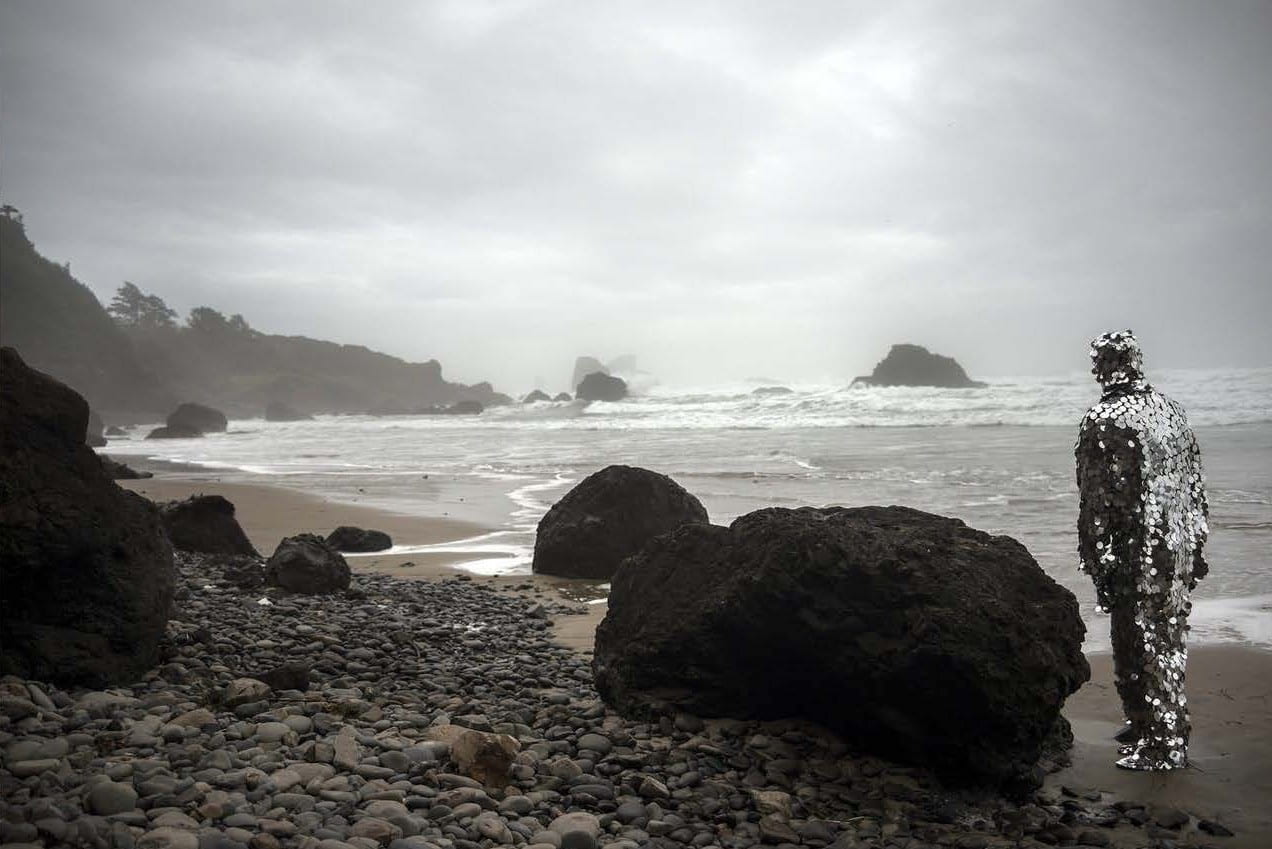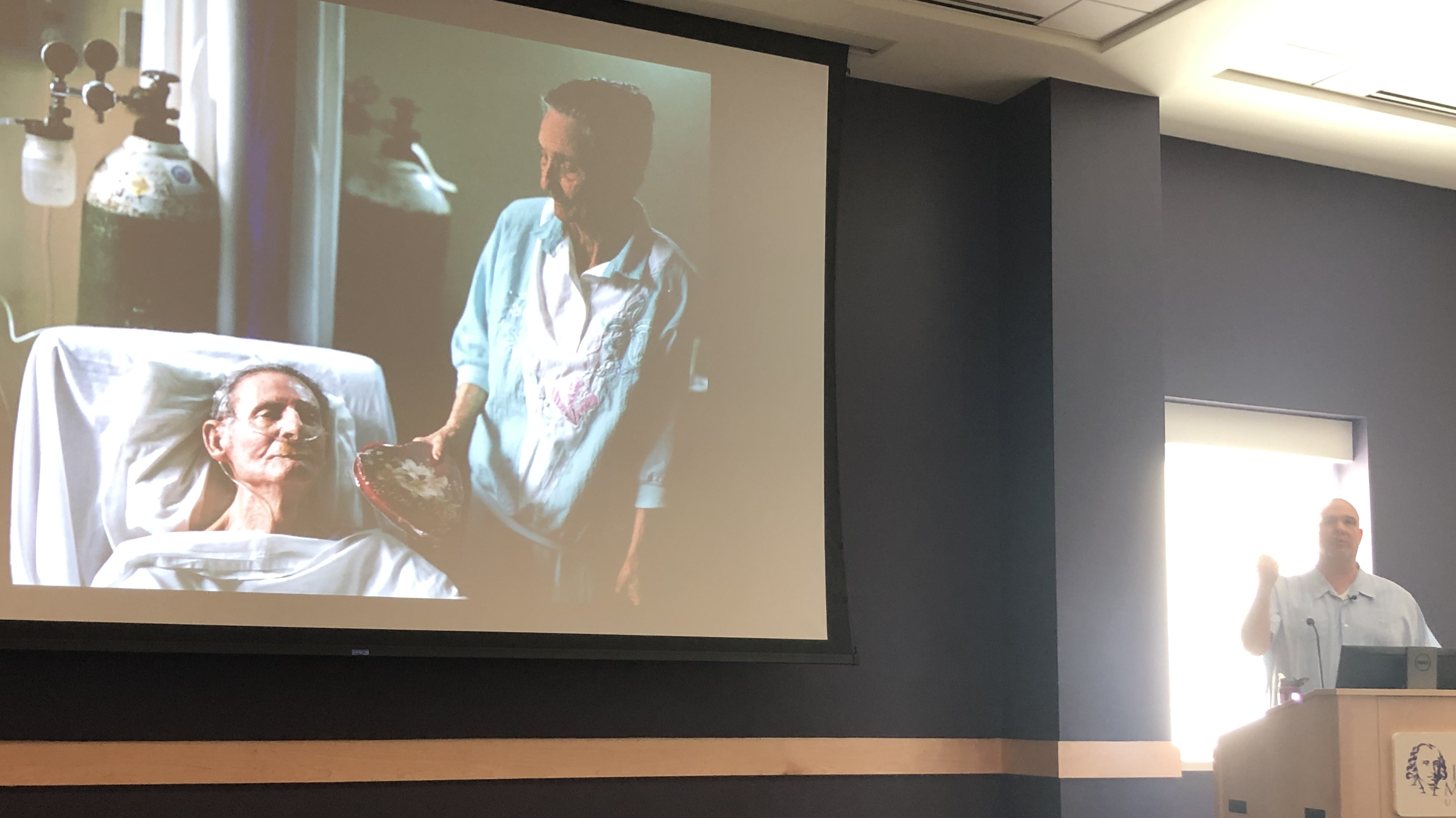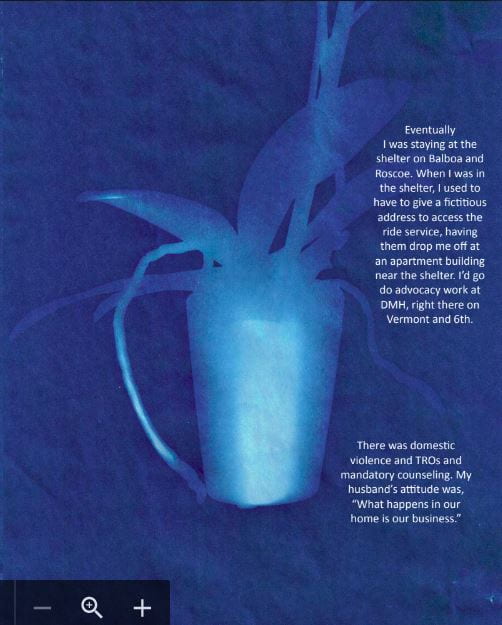Post by Julia Kravitz (Public Policy, ’19) and Carah Ong Whaley

“In, If Not Always Of” Is a series of photographs in which a being or presence that Pato Herbert calls, “The Oscillator,” appears in various landscapes. Photo by Pato Herbert.
Patrick “Pato” Hebert, a visual artist, educator and cultural worker, was a visiting scholar at JMU in February. In addition to being associate arts professor at NYU Tisch School in the Art and Public Policy Department, he is also very active in various social movements, including empowering homeless communities and LGBTQ+ communities. At JMU, several of Pato’s have been installed in the New Image Gallery located at 131 Grace Street and can be viewed until April 10, 2019. While a visiting scholar at JMU, Pato also gave a community workshop and public lecture.
In his lecture What You May Not See: Mobilizing Social Change Through Art and Imagination, Pato began with a thought-provoking quote, “The time for regarding yourself as only human is over,” which came to him during a session with a Brooklyn based healer/seer that he turned into an art installation.

“The Oscillator in Tualatin Hills Nature Park.” From the ongoing series, “In, If Not Always Of.” by Patrick “Pato” Herbert
Pato discussed his work regarding the Buddhist principle of interconnectedness between humans and nature, as well as the relationships between objects, light, and space. One of his main artistic projects that delves into this topic are photographs that feature a figure or presence called “The Oscillator” that appears in various landscapes. “The Oscillator” is a being with reflective, shimmering skin that reflects the surrounding area while the figure or presence interacts with the landscape. “The Oscillator” reflects its environment, without simply or always being of its context. This work prompts interlocutors to contemplate interconnectedness, the illusion of the self and the trappings of the ego. It also queries our relationship to place and space, and our limiting ideas that divide humans from nature.
 Another project that Pato discussed during his lecture was a series of family photographs that he layered and edited to illustrate several moments captured to appear happening simultaneously in one photograph. There is no clear main picture in each photograph, just a combination of pictures stacked on top of each other. He showcased some of his favorite and intimate family moments with the audience and explained how he loved challenging the conception of a single moment captured by a camera.
Another project that Pato discussed during his lecture was a series of family photographs that he layered and edited to illustrate several moments captured to appear happening simultaneously in one photograph. There is no clear main picture in each photograph, just a combination of pictures stacked on top of each other. He showcased some of his favorite and intimate family moments with the audience and explained how he loved challenging the conception of a single moment captured by a camera.
 Lastly, Pato discussed a recent project commissioned by the Los Angeles County Museum of Art (LACMA) to guide residents from Palo Verde Apartments, an LA Family Housing permanent housing facility in North Hollywood, to collaboratively develop and create a zine. In conceiving the work, residents chose to create an advocacy tool that would inspire homeless people to seek permanent housing. Pato’s ability to foster dialogue and encourage creativity helped the residents to own the project entitled, Learning to Trust the Moon. Pato spoke about how much he learned from these people and how they reshaped his conception of homelessness and the problems associated with homelessness as they were working together.
Lastly, Pato discussed a recent project commissioned by the Los Angeles County Museum of Art (LACMA) to guide residents from Palo Verde Apartments, an LA Family Housing permanent housing facility in North Hollywood, to collaboratively develop and create a zine. In conceiving the work, residents chose to create an advocacy tool that would inspire homeless people to seek permanent housing. Pato’s ability to foster dialogue and encourage creativity helped the residents to own the project entitled, Learning to Trust the Moon. Pato spoke about how much he learned from these people and how they reshaped his conception of homelessness and the problems associated with homelessness as they were working together.
Mr. Hebert concluded his lecture by describing how art is so powerful that it has the ability to mobilize actual change rather than just provoke intense thought. It is a form of expression that can be used to start discussions on a variety of topics, such as LGBTQ+ rights and the problems associated with homelessness.

Recent Comments